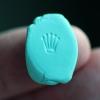When you buy through links on our site, we may earn an affiliate commission.
-
Posts
13,309 -
Joined
-
Last visited
-
Days Won
73
Everything posted by ubiquitous
-
It might help in that I'm learning new things about my camera. Owned the dang thing for a little over 10 years now and still figuring out how to use it
-
Vintage PPCo.
-
Gorgeous! Absolutely flawless finish, euno... Black paint is like a full time job all on it's own! If I'm not mistaken, your E31 is also black, isn't it?
-
Just adjusted the altitude... Sitting nice and low now...
-

Does anyone have one of the new Daytonas with A4130 clone inside?
ubiquitous replied to ubiquitous's topic in The Rolex Area
Errrr... Maybe! Guess it all depends on how good this new movement is! I'm hoping it's a good one... But we all know that this sort of stuff usually has some teething issues to work through first... -
I am! Life has been busy... But have not forgotten about watches! Or cars!
-
-
It's definitely an art all it's own. The many different methods in which dials are made are many and oft times difficult to produce; the effort to create usually yields some very beautiful results.
-
Yessir; the dials of this era were champlevé; in this case, the 'print' that you see on the dial (text, chapter ring, tachy scale, etc) is not really printing at all, but rather the dial is engraved for the text and then filled in with enamel. This was performed really more as a means of preservation; 1940's era PP were not sealed from the elements, and so the possibility of water penetrating the case was a possibility. The enamel text was to provide longevity to such breaches. The enameling provides a very interesting signature to the dial in that the text, chapter et all are raised slightly above the surface, and make for a very unique characteristic. If you look closely you can see it... This method was not exclusive to Patek... It's present on my VC dial, too (double bonus for guilloche) ^_^...
-
Thank you, sir! The genuine dial, hands, crown, etc. all help to make it what it is. Definitely one of my favorite builds! But you have a bunch of grail pieces in your collection that I'd give a kidney for!
-
Vintage PPCo 130 today...
-
Thank you kindly! No other car has given me as much enjoyment as this one! Gorgeous 991 you have! Looked at several 991.1s along with 997.2s... Ultimately bought the base 997.2 C2 as I wanted an example with as few of options as possible and this one turned up at the right place/right time for me
-
-
Like minded indeed!
-
Feels like a Big Crown kind of day today...
-
-
Monday wrist wear...
-
Still this old thing...
-
Some recent pics... ^_^
-
Think it's a Patek day today...
-
From the outside, it appears complete... And it nearly is. It's a usable piece that can be worn, keeps good time, looks the business... But I still need to replace the JLC movement currently inside with the proper caliber V454... Not a detail that anyone would really see since it's behind a closed caseback, but... I know. And that's why it has to be Thanks for looking!
-
-
It's a Big Crown day for me today...

